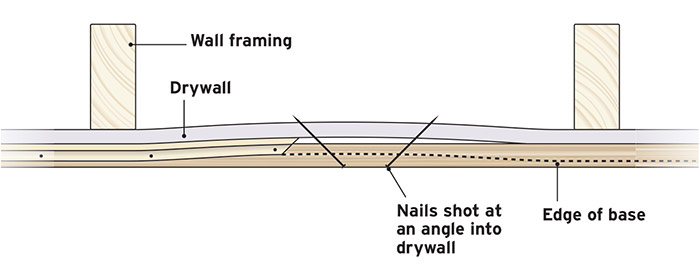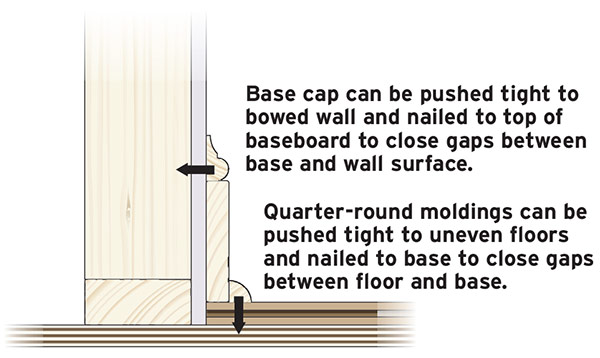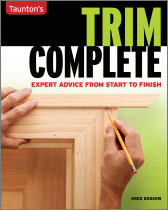Installing Baseboard over Uneven Surfaces
When installing baseboard over an uneven floor, you'll need to scribe it to the floor so that the top edge will be level.
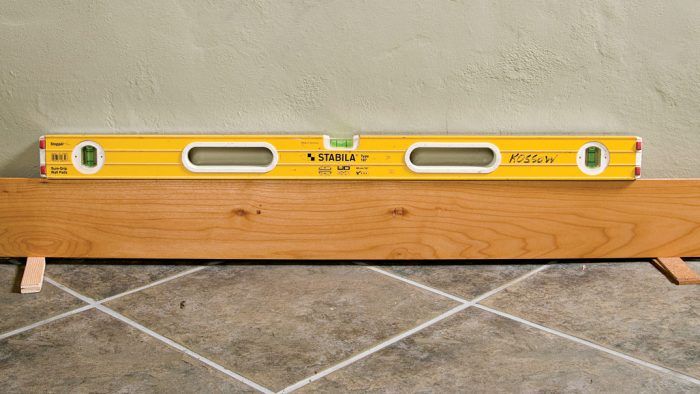
If the floor is uneven or out-of-level, you will need to scribe it to the floor so that the top edge of the baseboard will be level. Begin by creating level shim points for the base to set on during scribing ❶. Cut the base a little longer than required and scribe the first end to the abutting wall, if necessary ❷. Use a preacher to mark the cut line for the other end where it abuts standing molding ❸. The piece should now fit tight at its ends while sitting level on the shims. Using a scriber, transfer the outline of the floor onto the base ❹. Cut with an inverted saber saw being careful to leave the line ❺. Create an underbevel by slightly tilting the saw when cutting or while finish trimming with a belt sander ❻ or with a block plane if the line isn’t too irregular.
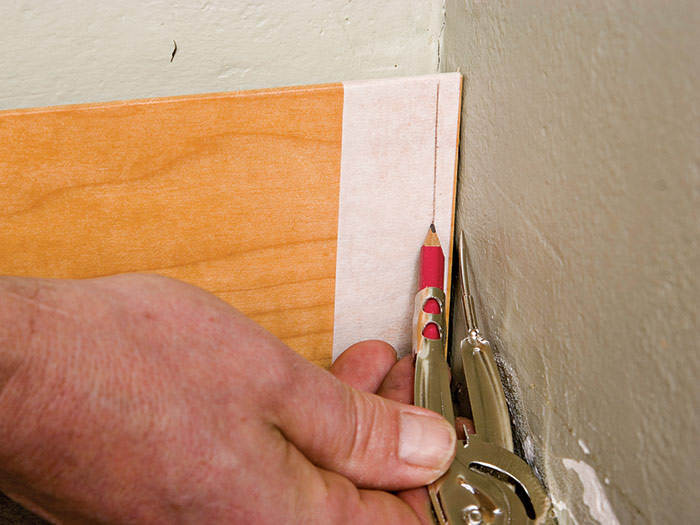
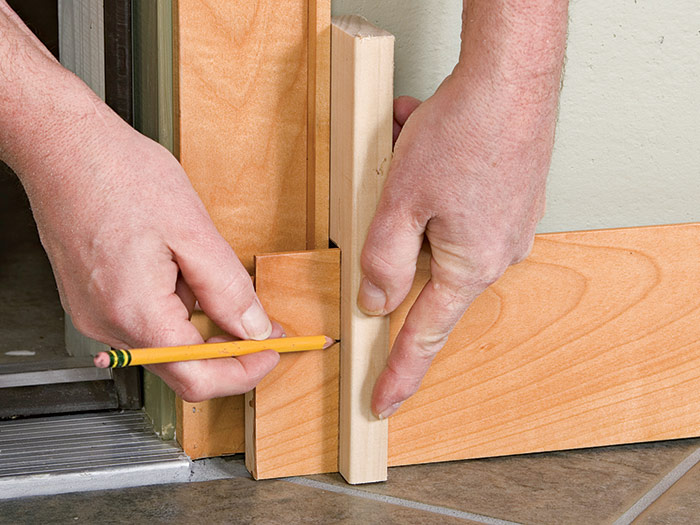
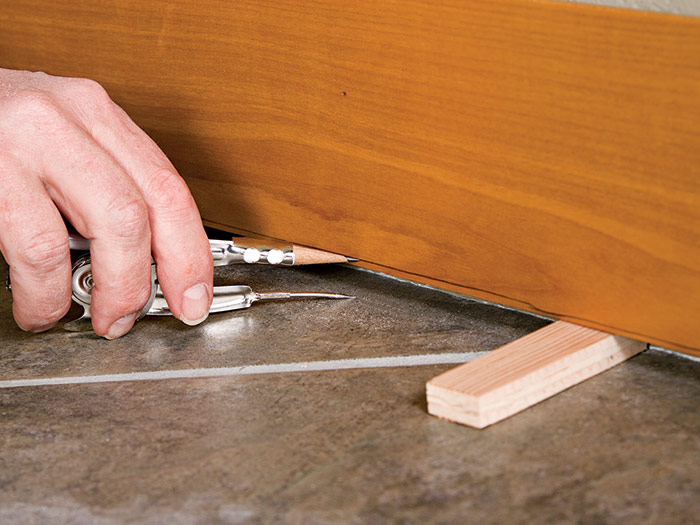
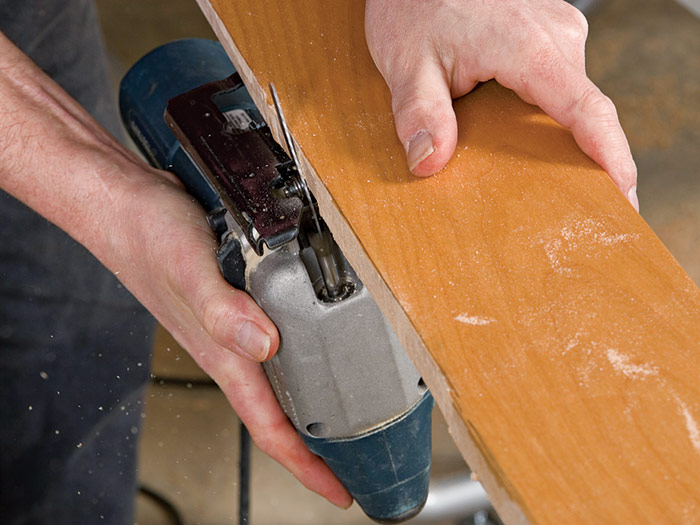
To prevent the board from jumping around while working on it, place the board across two sawhorses or clamp it to a bench top being careful that the cut line overhangs far enough past the edge of the bench to allow room for the saber saw.
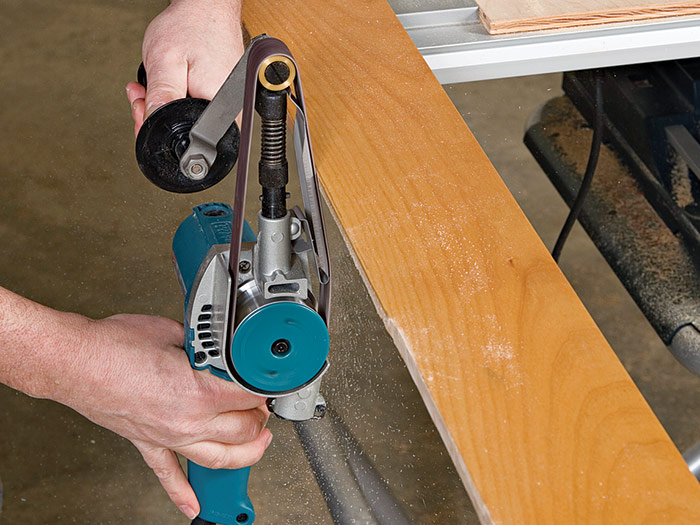
OR
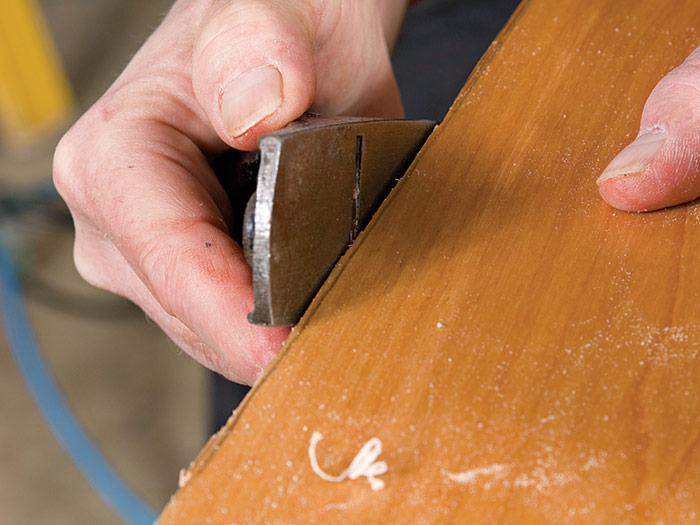
Installing Moldings on Uneven Walls
Installing flat wall moldings to a wall that has dips or humps can be a challenge. Paint grade moldings are the easiest to install because the gaps can be caulked and painted. Due to their greater flexibility MDF and urethane moldings are more easily bent to an irregular wall than solid wood moldings. Several nails shot through the base into the Sheetrock at an angle combined with a bead of construction adhesive applied to the wall will keep them tight to the wall in between the studs. Caulking works fine for filling in gaps but will not keep the base tight to the wall. The same is true for natural wood moldings in the smaller dimensions (less than 5⁄8 in. thick), but greater care is needed when caulking the top. In the case of multipiece baseboards, a base cap can be pushed tight to the wall helping to close the gap before being nailed tight to the top of the baseboard
| TRADE SECRET: When marking the scribe line onto prefinished, dark or coarsely textured woods, first apply a piece of masking tape to the board to make the line clearly visible and to help prevent the pencil from being diverted by deep grain lines. |
Compensating for Uneven Walls
Excerpted from Trim Complete: Expert advice from start to finish by Greg Kossow
Available in the Taunton Store and at Amazon.com.

